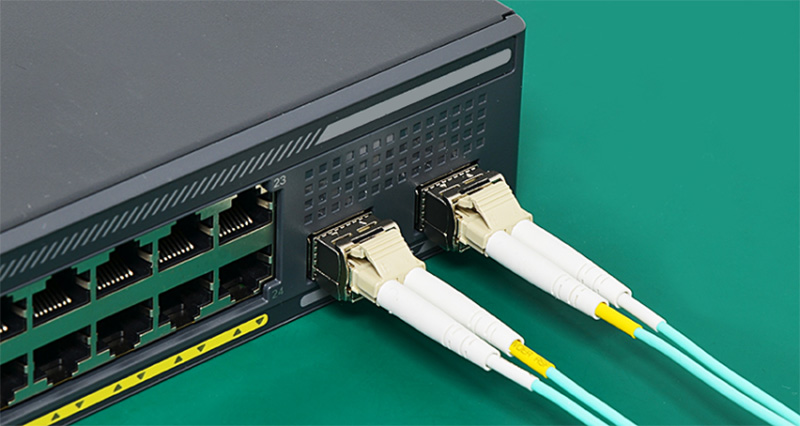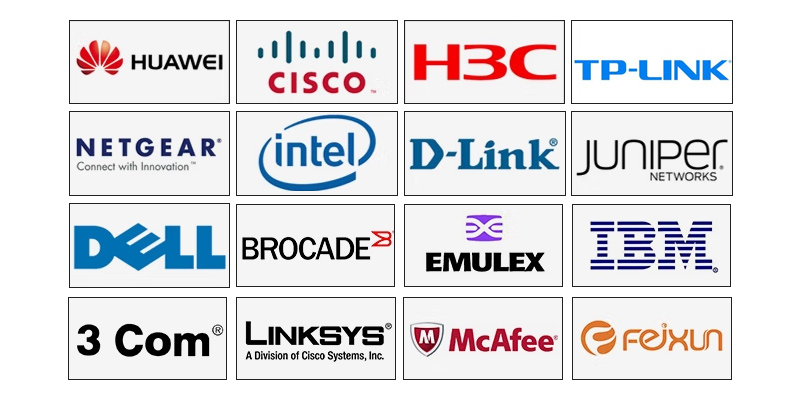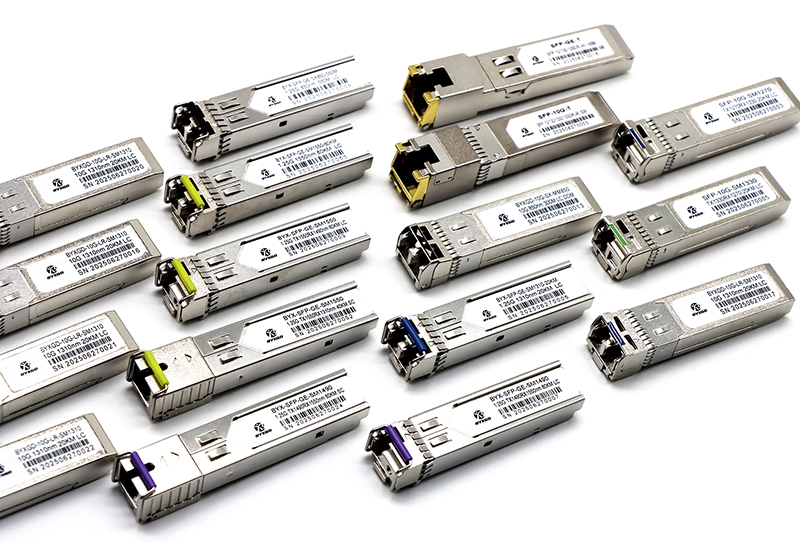Aruba, Ubiquiti & Fortinet SFP Compatibility Guide: Selection and Risk Mitigation in Multi-Vendor Environments

Managing Aruba, Ubiquiti, and Fortinet SFP modules in a multi-vendor environment can feel like putting together a jigsaw puzzle. Compatibility issues can be a major pain point, resulting in downtime and degradation of your network performance. Understanding the nuances of SFP selection and risk mitigation across these three vendors can help simplify your day-to-day experience, establishing smoother operation and solid connections. This guide will provide insider knowledge to help you more easily select and operate compatible SFP modules and optimize your network stability and efficiency.
How to Avoid SFP Compatibility in Multi-Vendor Network Environments
When you mix Aruba SFP, Ubiquiti SFP, and Fortinet SFP modules in a network, you are bound to face compatibility hurdles. Each manufacturer produces firmware, hardware designs, and codes associated specifically with their products, which may not always be designed with full compatibility in mind. Incompatibility can jeopardize proper performance and even communication failures.
This is like when completing a puzzle, and you have brand-new pieces from the same set, but each piece does not fit correctly and then can have a poor connection causing issues with uptime and possible data loss. Just like an unstable puzzle connection, brand incompatibility creates a potential for entire links failing altogether, leading to packet errors and reduced throughput in a network.
Ensuring that modules are properly matched strengthens and solidifies device communication resulting in stability and uptime. The correct SFPs will minimize signal loss attenuation and continuous and clean flow of data, which is critical for an organization that relies on applications that are properly functioning and mission-critical.
Managing compatibility and aligned branding becomes critical for investment protection, troubleshooting avoidance, and reactive scaling in hyper-homogeneous IT environments. IT networks built with similar brand fit SFPs, like Aruba, Ubiquiti, and Fortinet respectively, will produce consistent high-quality performance, reliability, and stability across multi-vendor organizational infrastructures.

Brand SFP Analysis: Aruba, Ubiquiti, Fortinet Selection Guide
It’s important to know what makes Aruba switch SFP modules, Ubiquiti SFP, and Fortinet SFP different from one another to help you choose the right component for mixed environments.
Aruba MFA Components: Important Characteristics, Typical Usage, and Selection Tips
Aruba SFP modules are built for enterprise networking and provide connectivity that is reliable and high-performance. Modules are often designed with considerations for energy conservation and performance in Aruba switching. Typical usage can be seen in branch offices, campus networks, and high-density data centers. When selecting Aruba modules, you will want to check if they are compliant with your port speed (1G, 10G), the type of fiber required (single-mode or multi-mode), and the reach distance you require. Aruba modules tend to stay very close to working with Aruba OS firmware, and modules will work well together with a low risk of mismatch.
Ubiquiti Components: Characteristics, Typical Usage, and Compatibility Notes
Due to the cost-effectiveness of their SFP modules and flexible deployment strategies, Ubiquiti SFP modules are a fixture in small to medium-sized business networks or service providers. Their SFP modules typically span many speeds and fiber types and meet the price/performance balance of deployment considerations. Ubiquiti SFP modules frequently offer plug-and-play compatibility and can easily be incorporated into Ubiquiti’s UniFi product line. However, if your Ubiquiti SFP modules will be inserted into a non-Ubiquiti switch, you will want to check compatibility charts to see if there are firmware variances between the components that may block recognition of the modules. In general, always choose modules that have been certified by Ubiquiti for inter-brand operability to avoid loss of links.
Fortinet Components: Overview, Deployment Considerations, and Compatibility Notes
Fortinet SFP modules are typically designed for Fortinet security appliances and Fortinet switches. If you are looking for additional security along with connectivity, Fortinet SFP modules deliver the security features needed. Fortinet SFP modules can support multiple speeds and cable types and are mostly optimized to provide secure communication environments. Some general considerations during deployment include checking what version of firmware is currently on your Fortinet device and making certain that your SFP supports the same version of firmware. Otherwise, the switch will likely not recognize the SFP. Fortinet SFPs can be validated and tested for compatibility with the proper security appliance or Fortinet switch in your network. When choosing, always look for modules that have Fortinet certification for equipment support and firmware updates.
There are positives with each SFP package: Aruba SFP modules tend to be more stable and secure in enterprises, Ubiquiti is a low-cost, flexible deployment option, and Fortinet SFPs fit within more secure environments. Taken together, understanding these differences and limitations can help network and systems professionals select SFPs that best match their operational needs, ensuring more reliable and enhanced performance across mixed vendor deployments.

Compatibility Matrix and Exclusive Data: Cross-Brand Interoperability Insights
In technology, multi-vendor solutions have become commonplace, and interoperability is essential for successfully managing service levels and network uptime. The interoperability between Aruba SFP, Ubiquiti SFP, and Fortinet SFP modules is necessary for the network to achieve a high level of performance and reliability. Using visual comparison charts, such as the one shown below, can allow for differences in performance, price, compatibility, and warranty between the brands to be more easily recognized and understood when deciding on your model selection.
Performance-wise, Aruba modules tend to perform well and adjust with lower variability in their recognition speed and optical power output, which is critical to lowering the frequency of link failures. Ubiquiti modules do well as a cost-effective option and are compatible with other vendor modules but usually lag slightly in their recognition speed. Fortinet modules tend to be positioned around secure, stable connections and take steps in Fortinet’s rigorous testing frameworks to lower the bit error rate (BER).
Each brand has been tested in our lab environments, and some key provided markers are listed below:
- Module Recognition Speed: Aruba leads the way as it has almost instantaneous brand recognition and performance. Fortinet modules closely follow. However, Ubiquiti modules will sometimes take more than 10 seconds before recognition.
- Optical Power Stability: 75% of the time, both the Aruba and Fortinet modules had tight optical power fluctuations, which means the power is consistent and will be less likely to fail. Only Ubiquiti had a more varied optical power delivery.
- Bit Error Rate (BER): All the modules maintained low BER performance, but Fortinet modules had the lower BER and error probability based on its security foundational focus.
Reading the official compatibility matrix for each brand is critical when wirelessly connecting the combination of protocols and vendor connections (the device’s hardware model and firmware/software version) to supported modules or brands. Each brand model compatibility matrix also states where the module is supported and flags features or restrictions for other brands, including patching and firmware levels.
Neglecting to consider your hardware or software model multi-layer or multi-vendor combinations will lead to module or protocol disregarding or unstable connections. Use the compatibility matrix as a trustworthy reasoning for making decisions and selections. Also, firmware updates should be done regularly, as firmware updates are frequent and can lead to helpful support of additional SFP modules or possibly have a positive impact within a multi-vendor environment.
By understanding the comparison metrics of cross-brand use of modules, as well as how the systematic process of the matrix was created, the network engineer can create a secure and reliable network, regardless of the mix of vendors or brands in use. At the end of the day, if trust is maintained in your process, you will create security, minimize risk, and maximize uptime in your multi-vendor use.
Best Practices for Procurement and Management
A strategy was established for a large enterprise consisting of a multi-brand SFP strategy that included Aruba SFP functionality compatibility and Fortinet-approved SFPs. The objective of this project was to improve uptime and reduce costs after frequent network outages due to non-compatible modules were discovered.
The selection process started with an exhaustive compatibility review using official SFP matrices to ensure selected modules qualified with each vendor’s firmware and hardware requirements. We undertook a pilot testing process in a lab environment to help identify the best modules that could operate through all Aruba, Ubiquiti, and Fortinet solutions.
Deployment has its own challenges, including coordinating firmware upgrades and dealing with inventory management vendors. As a matter of controlling procurement, our team maintained a single inventory that incorporated all SFPs used across each vendor, with compulsive records of module type, serial number, software version, and deployment date, allowing us to simplify both the procurement and logistics processes.
We kept detailed compatibility documentation that was then utilized as a foundation for training and change management so that all IT staff understood the limitations on modules and processes for upgrading. We established a routine for updating firmware that maintained stability, kept system complexities minimized, and allowed for the integration of new SFP models.
The testing we accomplished prior to production implementations avoided service interruptions and ultimately led to the team being able to proactively address interoperability issues with modules and their performance challenges. We created a disciplined process that proactively reduced costs from operational interruptions and minimized downtime.
The result was increased network connection stability, more rapid recovery of link failures, and demonstrated ROI through a decline in faults and maintenance costs. This process demonstrates how highly structured procurement and management of multi-vendor SFPs contribute to safeguarding network performance and adding value to hardware lifespan within complex environments.

FAQs
How can someone check compatibility between SFP modules and devices from Aruba, Ubiquiti and Fortinet?
Determine compatibility by checking each brand’s compatibility matrix and comparing the version of the firmware you are using on the device to the firmware version listed as supported for each SFP model you are considering. Also, check if the part numbers match, and you’ll have the greatest chance of success.
What if a device will not accept an SFP module from another brand?
When this happens, it can be due to firmware or hardware version compatibility. Typical resolutions are to update the firmware or use an SFP module from a manufacturer that approves their module to be compatible between vendors.
What if mixing different brand SFPs reduces network performance?
Mixing SFP formats could cause intermittent problems if their untested or uncross-referenced models are not compatible with your devices. Each SFP must be confirmed by the SFP manufacturer to be accepted by each device manufacturer before testing direct interoperability between SFP products.
What do compatibility matrices look like and how do I keep mine current?
Compatibility matrices will list the SFP modules that are acceptable with that generation of firmware for devices. For your compatibility matrix to remain current, you will need to stay aware of the firmware releases delivered by manufacturers and always use the newest recommended firmware before testing compatibility.
Are third-party SFP modules safe to use across Aruba, Ubiquiti, and Fortinet modules?
Many third-party vendors/generic modules are tested and work well in many situations; however, many product features are tied to support and reliability. In many cases, COTS components have higher failure rates. Use of certified or tested third-party products will help reduce risks.
What certification and testing standards help support cross-compatibility?
Consider products that are compliant with IEEE standards and have been tested in implementations with multiple vendors to ensure interoperability.
What are the major differentials between Aruba, Ubiquiti, and Fortinet modules?
A general summary could be that Aruba focuses on delivering enterprise-grade and reliable stable solutions. Ubiquiti focuses more on flexibility with regard to budget. Fortinet focuses on security-rich environments because they thoroughly test the compatibility of the relationship between modules and firmware.
What are the best practices for troubleshooting SFP interoperability issues?
Check the compatibility matrix for the first product compatibility; look at the firmware on each device using the respective SFPs; check any patch cable quality; and lastly, look in the respective system logs for any SFP-related errors.
What are the best practices for firmware updates with the intent to increase compatibility?
Have a schedule to put periodic firmware releases into your operations with new or recommended firmware. It is always best practice to use the suggested firmware.
When should I choose OEM modules over third-party?
In general, OEM modules for mission-critical operations and their respective deployments are preferred when compatibility and supported warranty or repairs are guaranteed.
Conclusion
Understanding Aruba SFP compatibility, Ubiquiti SFP compatibility, and Fortinet SFP compatibility matrices is important for multi-vendor network operations, as accurate SFP module compatibility will improve performance and reduce downtime risk.
Be proactive with your network, use only vetted products with third-party compatibility training, and consult with the experts to get any tailored solutions. This helps ensure reliable network connectivity and optimization of your network when using an SFP with mixed vendors.
